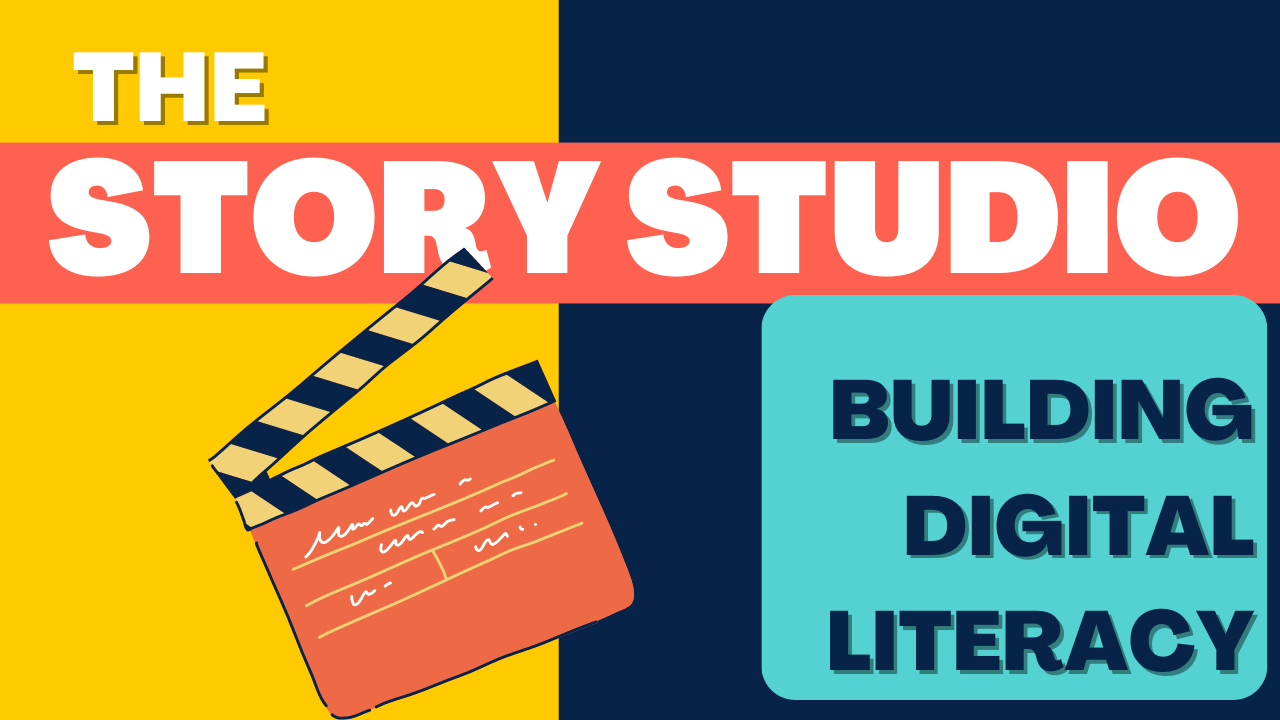Blogs

The Story Studio: UD's Resource for Building Digital Literacy
By Hannah Jackson
Let’s face it: the way information is produced, shared, processed, and consumed has changed. Our students have an increasing need to leave higher education with digital literacy and a competent digital portfolio. Employers are expecting graduates to use technology to support and enhance the other skills they are bringing to the career field. It is not just the student in media marketing who needs to know how to do basic filming and editing (just as it is not only the journalist who needs to know how to write well). Digital literacy is one of the most profound ways we can prepare our students to be productive, successful contributors to their fields.
Where does it all start? In the classroom!
Digital projects in the classroom can take many forms– building a website, recording a podcast, curating an exhibit, creating a video. There are a host of purposes you may ask a student to complete a product in video form:
- For effective storytelling
- To form an effective oral and visual argument
- To compile research into a compelling presentation
- For capturing interviews or other learning experiences live
- Capture an object or artifact digitally
- To put on a show
- For showing and telling
Now, what should you do if your personal producer, editor, animator, boom operator, and cinematographer all go on vacation the same week? (It happens.) UD’s Story Studio is the comprehensive, all-inclusive media production studio on the second floor of Roesch Library. All you need is a thumb drive and a plan.
Why use the Story Studio?
The studio is equipped with lights, a camera, a large, touch screen computer monitor, and computers equipped with editing software. When you plug in your thumb drive, the whole studio powers on. Follow the simple instructions inside the studio to adjust the camera to your positioning in the room, and get started!
The Story Studio allows you and your students to create quality video projects with no prior video-creation skills. Maybe your students are tasked with a creative project to submit on Isidore. Sometimes, the video your student is recording does not necessarily call for a long lecture-style presentation, but the student needs to record an introduction and conclusion. Maybe students need to record an interview with a professional or a peer. Perhaps the graduate students whom you are mentoring need to practice their thesis defense and want it recorded to watch back and critique. Maybe you want to film high-quality lectures for your online courses or meet with someone from the field and record a conversation for your students to view. Or, you might need to film yourself for a virtual conference.
Alternative assignments like digital media projects allow students to use and show competencies necessary for the world beyond their degree. As an added bonus, they promote academic integrity as creative projects are not conducive to plagiarism.
How do I use the Story Studio?
The details are more exciting if we make this a birthday party invitation:
Who? Any UD staff, student, or faculty member.
Where? Roesch Library, room 232. When you enter the library on the first floor, just let the staff member at the reception desk know that you have a reservation. They will swipe you into the room.
When? The Story Studio is open from 9AM-9PM most days.
Do I need to RSVP? It’s completely self-service, but you will need to reserve your time on the Library Reservation Site. You can reserve it for 2-hour blocks per day. This is also the page where you can reserve the computers outside of the studio to edit your work.
BYOT: Bring your own thumb drive! You will need it to start the studio and record your video. Also bring any slides you’d like to project behind you. You have the option to write on the whiteboard and lecture. If you have a script, consider putting it on your laptop screen in a large font so that you can see it from your filming spot.
If you’d like your whole class to visit the Story Studio, contact your library liaison to organize a time for your students to work with the wonderful librarians and research experts located in Roesch Library.
Think about what is holding you back from designing digital media projects for your students. Is it the daunting task of managing the technology? If so, the Story Studio is the approachable place for you and your students to start. Take some time to visit it for yourself, and then consider what areas of your course could be well-translated into a creative project. (Learn more about getting started with project-based learning.)
For a collaborative planning partner and guidance on incorporating technology into your curriculum, reach out to us at onlinelearning@udayton.edu.
